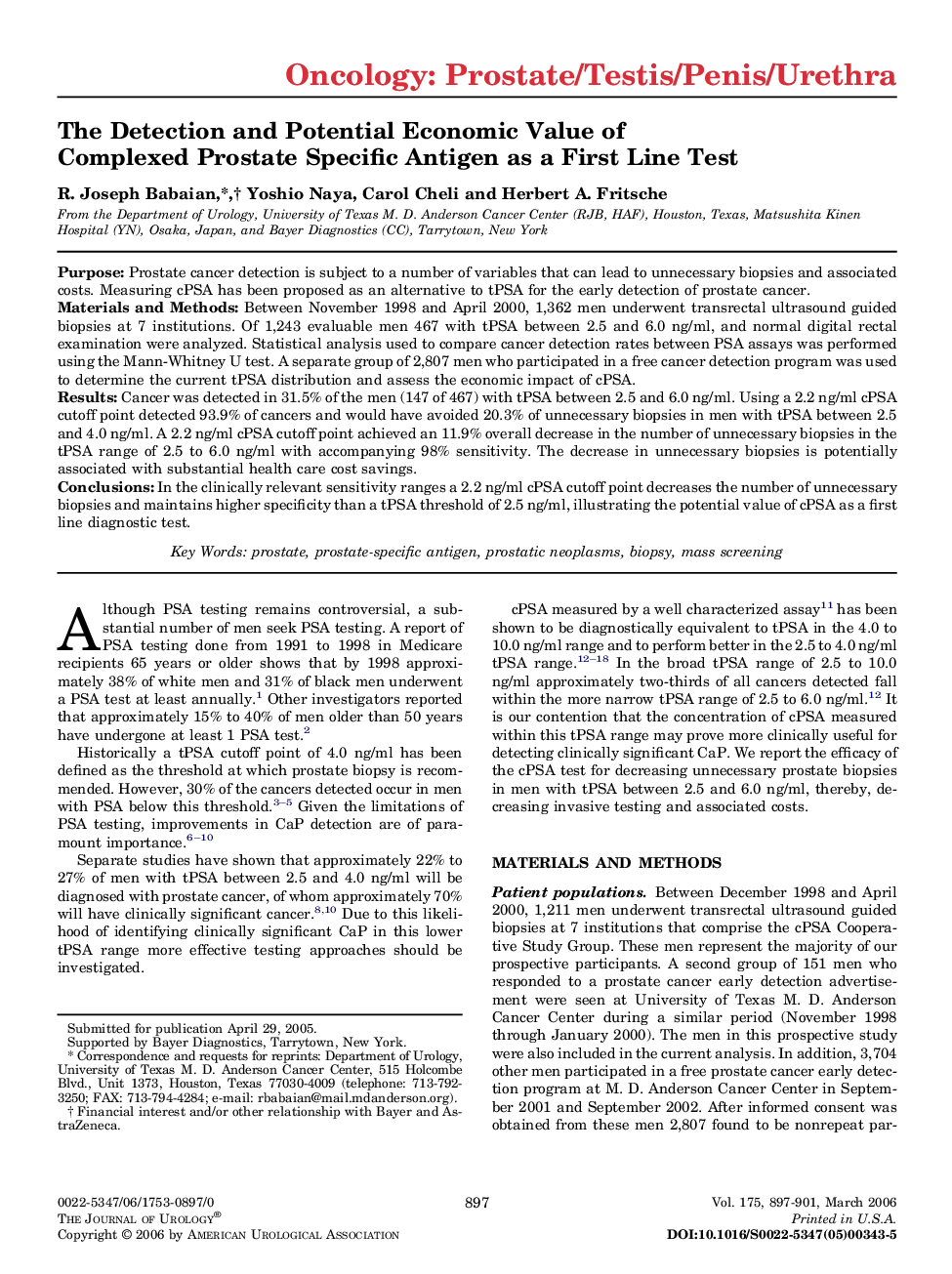| کد مقاله | کد نشریه | سال انتشار | مقاله انگلیسی | نسخه تمام متن |
|---|---|---|---|---|
| 3877298 | 1599027 | 2006 | 5 صفحه PDF | دانلود رایگان |

PurposeProstate cancer detection is subject to a number of variables that can lead to unnecessary biopsies and associated costs. Measuring cPSA has been proposed as an alternative to tPSA for the early detection of prostate cancer.Materials and MethodsBetween November 1998 and April 2000, 1,362 men underwent transrectal ultrasound guided biopsies at 7 institutions. Of 1,243 evaluable men 467 with tPSA between 2.5 and 6.0 ng/ml, and normal digital rectal examination were analyzed. Statistical analysis used to compare cancer detection rates between PSA assays was performed using the Mann-Whitney U test. A separate group of 2,807 men who participated in a free cancer detection program was used to determine the current tPSA distribution and assess the economic impact of cPSA.ResultsCancer was detected in 31.5% of the men (147 of 467) with tPSA between 2.5 and 6.0 ng/ml. Using a 2.2 ng/ml cPSA cutoff point detected 93.9% of cancers and would have avoided 20.3% of unnecessary biopsies in men with tPSA between 2.5 and 4.0 ng/ml. A 2.2 ng/ml cPSA cutoff point achieved an 11.9% overall decrease in the number of unnecessary biopsies in the tPSA range of 2.5 to 6.0 ng/ml with accompanying 98% sensitivity. The decrease in unnecessary biopsies is potentially associated with substantial health care cost savings.ConclusionsIn the clinically relevant sensitivity ranges a 2.2 ng/ml cPSA cutoff point decreases the number of unnecessary biopsies and maintains higher specificity than a tPSA threshold of 2.5 ng/ml, illustrating the potential value of cPSA as a first line diagnostic test.
Journal: The Journal of Urology - Volume 175, Issue 3, March 2006, Pages 897–901